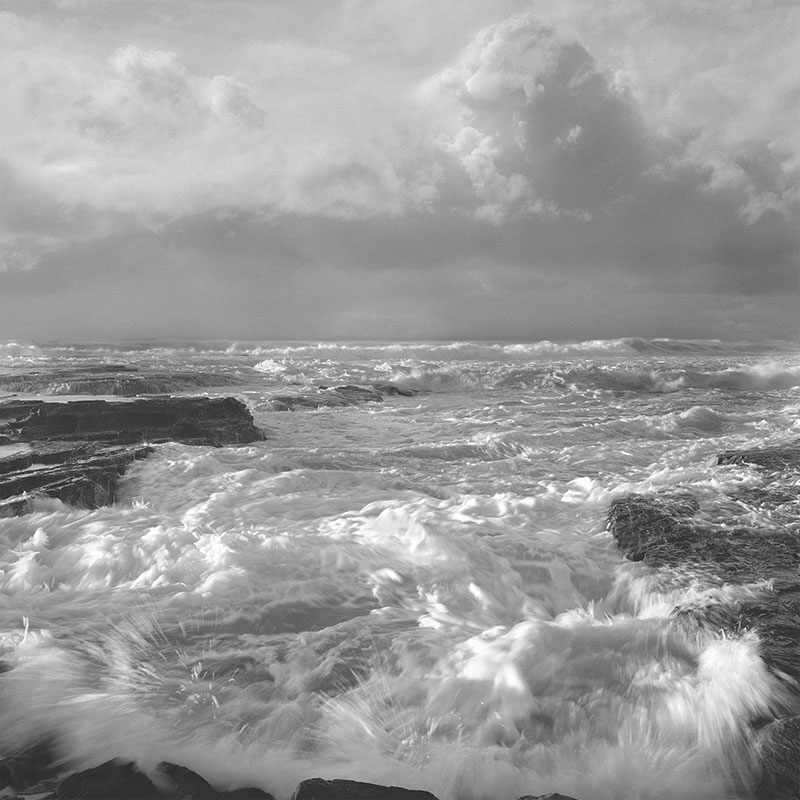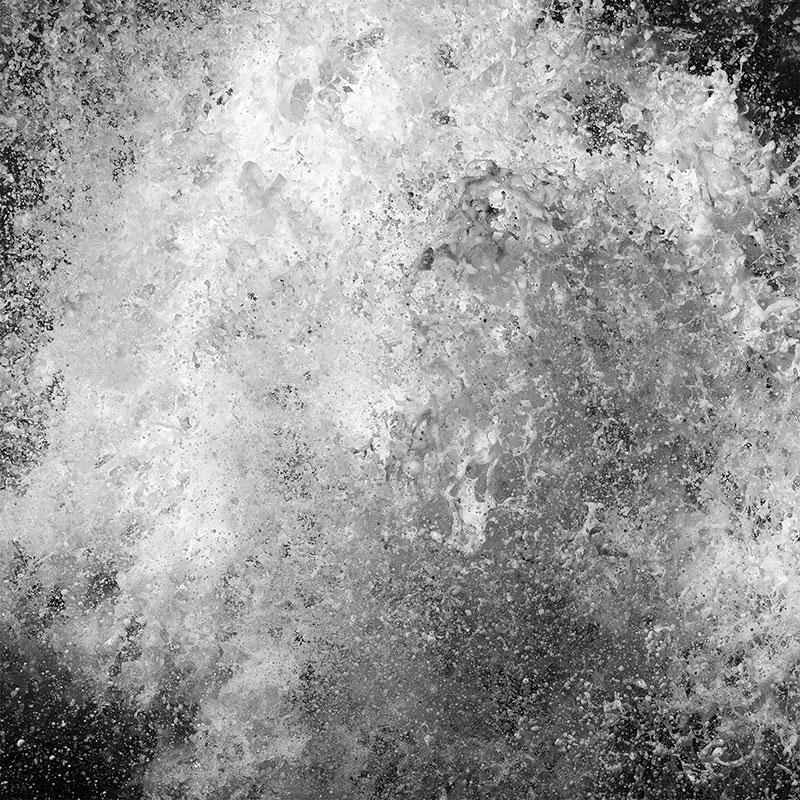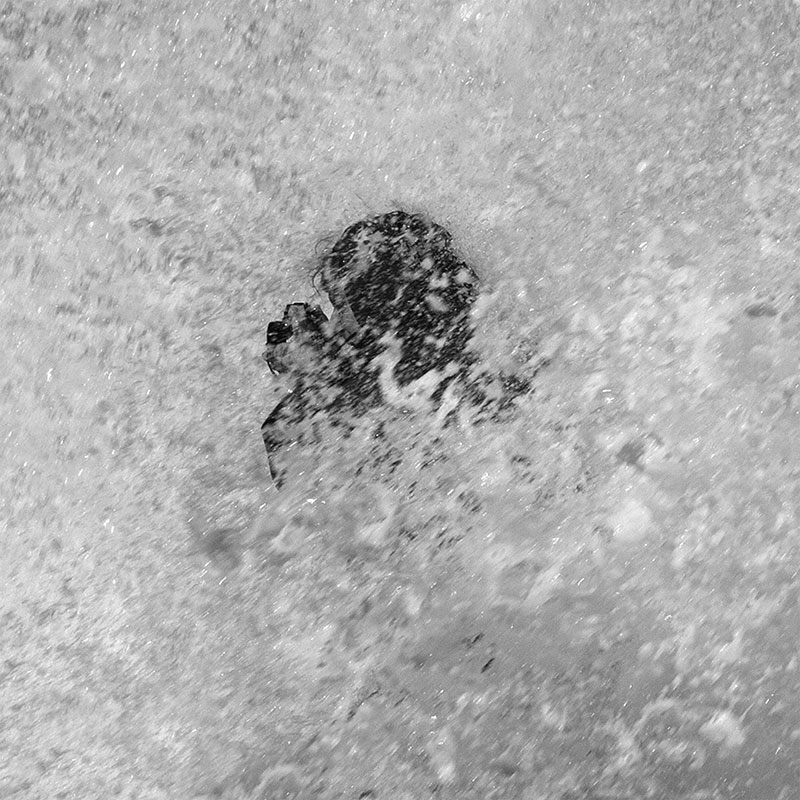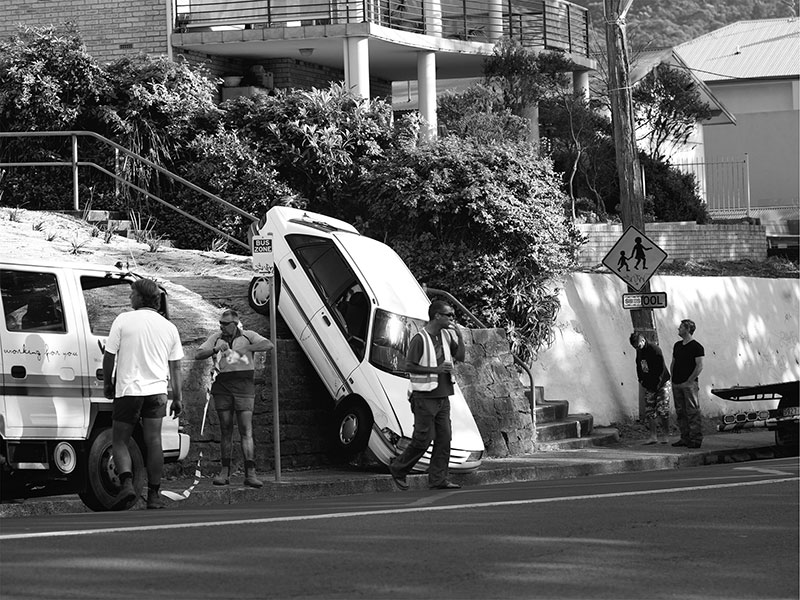
A preoccupation with process began to shape visual art somewhere in the 1960s, engaging viewers in the actions of the artist while assembling and experimenting with structures and communicating belief. Derek Kreckler is one such pioneer of the movement investigating materiality, chance and experimentation through performance, photography, installation and film media.
A graduate of the South Australian School of Art in 1980, the touring exhibition Derek Kreckler: Accident and Process curated by Hannah Mathews, examining forty years of the artist’s oeuvre, marked a return to the source with the current exhibition at the University of South Australia’s SASA Gallery. Responding to the titular theme, Accident and Process includes bold images of Kreckler taking physical risks in such works as Big Wave Hunting (2011), which shows the artist submitting to the elements.
Beautifully documenting the stages of turbulence, the photographs show an industrial site far into the distance; pollution floating into the atmosphere with the same gracefulness as the crashing waves. In another frame, Kreckler is a shadow engulfed by a wave with camera in hand. The series acknowledges the formal challenges of photography while conveying the artist’s concerns about the environment. In this series, as in other works that focus on the body and bodies of water, actions are presented as a series of documents, experiments and trials that communicate ideas of possibility, potential and accident.

In various works included in the exhibition, Kreckler also teases out our relationship to the moving image as spectacle. In Antidote 2005, a seven-channel video projection of the Quinninup Falls, Western Australia, he restructures the speed of each view of the waterfall to deconstruct the image of cascading water captured on film. Instead of this sublime and iconic experience, we are presented with an alternative reading, as a chaotic cavalcade of flows and imagery at different speeds and angles jutting up against each other, colliding and amplifying a distorted view of the falls. The possibility of failure, of misrepresenting nature is clear also in the way the work is presented (hung low on the wall and at a small scale).
The sea, and in particular the intertidal zone – the area between high and low tide marks – meanders across much of Kreckler’s photographic work to break up the space of representation of waterways to symbolically express the space between representation and reality. A more recent work, Littoral (2014), fractures the moving image of water and the viewer’s perception of it. His inspiration started from a breeze blowing through a doorway dividing the space between the kitchen and exterior via a stranded blind. Kreckler expands on the simplicity and domesticity of this household action on an amplified scale through combining footage of a tumbling wave and the real-time sensory experience of an oscillating fan and stranded screen to create a mesmerising and immersive play of light and form.
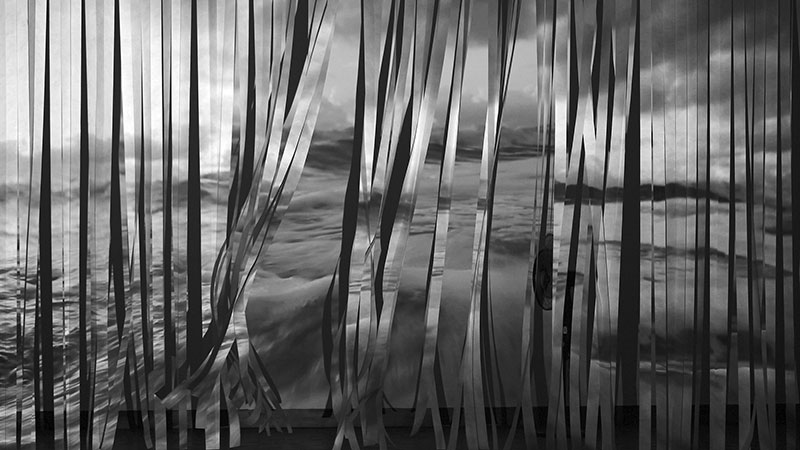
Another work that is domestic in origin, How to Discipline a Tree (1989), presents an installation of 1,000 compressed blocks of newspaper erected in a ziggurat-like shape but modelled from the buttress roots of an Australian fig tree. These newspapers represent one month of consumption – one month of reading – by a Sydney household in 1989. A monument to changing trends, it contrasts the shifting role of news media and information sharing today with this historical monolith to the “lost word” that can be just made out of the repurposed remnants of each individual stacked brick crafted from pulped paper.
For the series Daddy’s Watching (2009), Kreckler took photographs of young people staring out at the swelling waves of the beach, while far off on the horizon a plume of smoke can be seen escaping from Port Kembla (the primary coal facility of NSW). This image, animating ideas of cultural and regional identity, is evocatively hazy in its composition, providing a backdrop that is vast, vacant and expressive of future possibilities.
The series White Goods (2004) further employs photography to communicate issues of nationalism, consumer society and cultural identity. Here, Kreckler composes exaggerated scenarios of (white) people in regional and suburban settings observing the staged spectacle of hanging fridges (standing in for human corpses). Beautifully presented as photographic tableaux employing layers of detail (through the choice of actors, costumes, setting, lighting etc.) to encourage an emotive response, these images represent multiple concerns, most notably the history of racial tensions between white, black, indigenous and non-indigenous communities. Encouraging multiple readings, it most notably preserves the appearance and drama of an American lynching. The imagery is unsettling, haunting and painfully familiar. Through choreographing the performers to evoke possible moments in a parallel Australian history, the resulting images present the unsettling interactions of a small community at an indeterminate period in time.
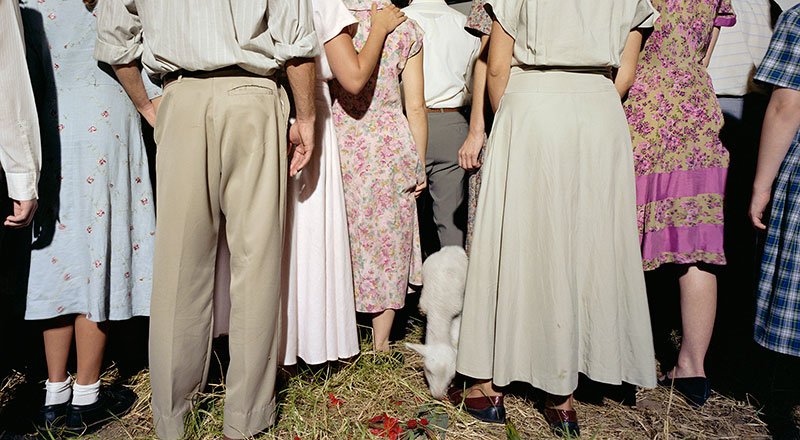
At the time this series was commissioned (for the 14th Biennale of Sydney: On Reason and Emotion) the Australian Government had ordered a Royal Commission into the deaths of Indigenous people in custody; now, over a decade later, the situation has not markedly improved for Indigenous detainees, after startling recent findings and the announcement of a Royal Commission into the treatment of Indigenous children in detention centres. Kreckler’s works are witness to the renewed relevance as a disheartening reminder of the lack of progress.
Blind Ned (1996) is a further allusion to the Australian colonial period. For this exhibition, SASA gallery has presented the work on a small television monitor on a low plinth, easy to miss as you enter the exhibition. It is like watching an old “telly” at home, matched by the black and white, filmic grainy quality of this evocative re-interpretation of an Australian icon in the bush setting. Here, we watch a blind Ned Kelly in his iconic helmet and armour traversing down a scrubby hillside, with a tapping cane, fitfully appearing and disappearing out of the frame, uncertain of his whereabouts. Blindness is perhaps a metaphor for inhabiting unfamiliar territory (colonial settlement) and negotiating an unfamiliar terrain. Here, too, Kreckler is satirising both the hero and the Australian landscape as cultural icons.
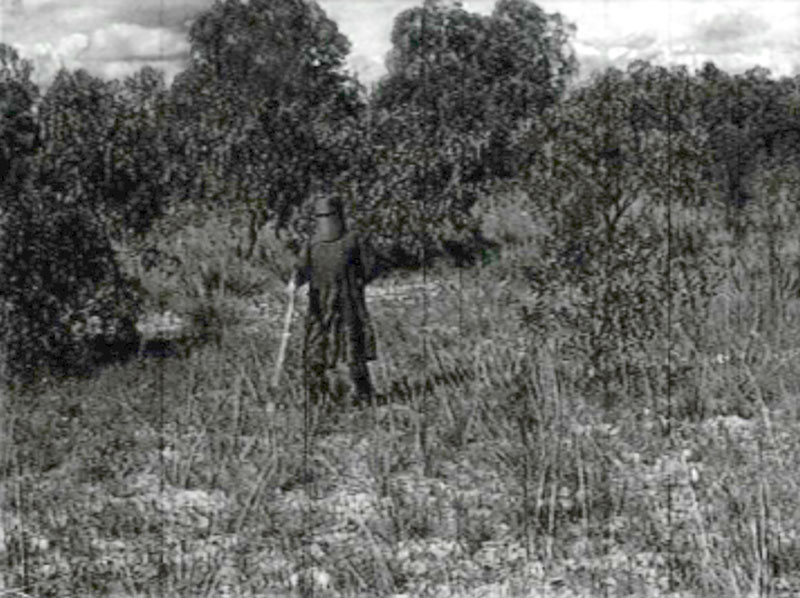
The culmination of five decades of work and experimentation is succinctly presented in the series Accident and Process (2012). These works speak to Kreckler’s practice as a series of experiments and trials (starting out with Bicycle Race, 1978) processed and examined through a linear time frame or left open-ended in the engagement with chance. A sense of trickery and playfulness emanates from each work in the series as the viewer is left to question the authenticity of the image – an energy that permeates throughout the entire exhibition.
Images of waterfalls, tumbling waves, awkward structures, scenes of life in rural and suburban communities capture aspects of an iconic Australian identity and lifestyle to provoke a response. The wrath and accident of nature, as captured by the kinetic energy of waves in particular, is a theme that we now look at with bolder views on climate change and extreme weather events. This presentation of many key works, invites renewed attention to the enormity (sublime invocation) of these shared spaces and opportunities while questioning what they stand for. Kreckler’s oeuvre is broad in its conception and subject matter. As this exhibition serves to highlight, chance, disruption, terror and accident are provocative ways of dislodging ideas of certainty and breathing new life into the work that has been produced over a period of decades to broadly engage key themes.
